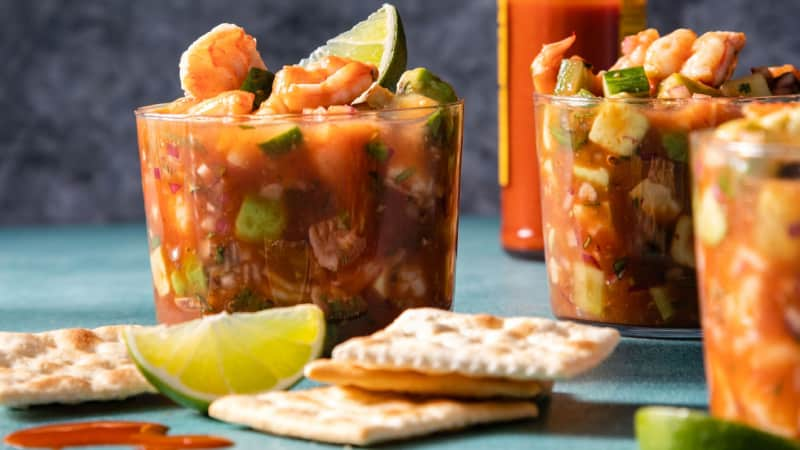My Goals and Discoveries
Tender shrimp
Using residual heat to cook the shrimp ensures that they won’t turn rubbery. Bringing the water to a boil before adding the shrimp ensures that there will be enough heat to cook them through.
Easy to eat
Cutting the shrimp into bite-size pieces makes them easier to scoop up with a spoon.
Sauce that’s not too sweet
Savory V8, lime juice, and hot sauce help balance the ketchup’s sweetness. V8 also has a slightly more viscous consistency that, along with the ketchup, gives the sauce body to coat the shrimp.
A mix of textures
Cucumber and red onion add crunch while avocado provides creaminess.




